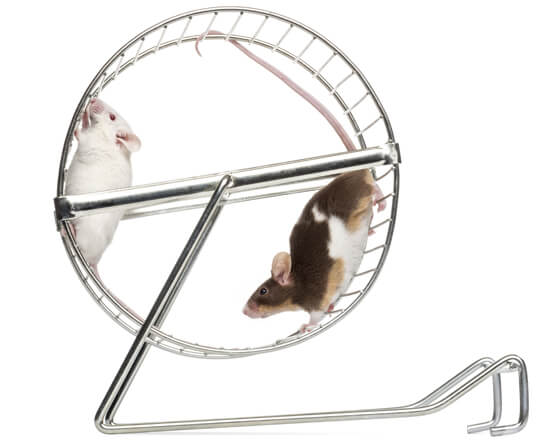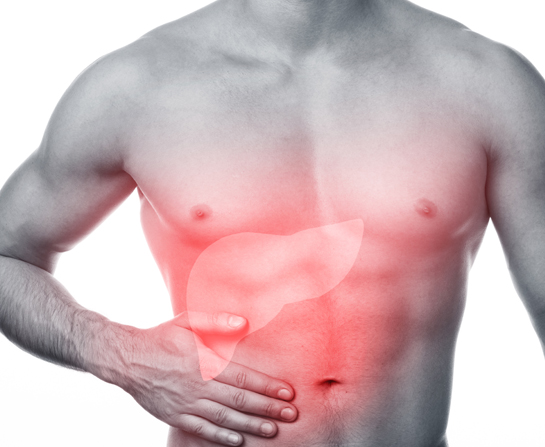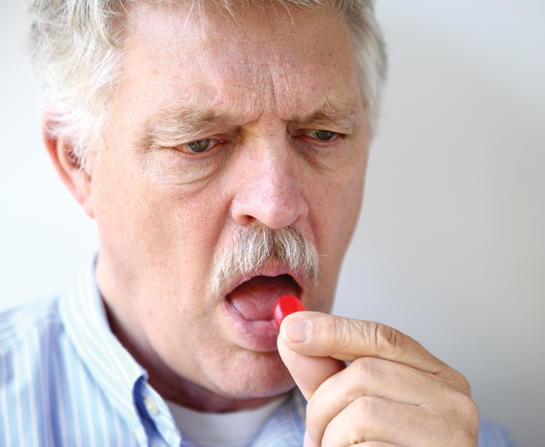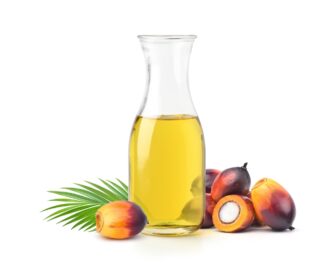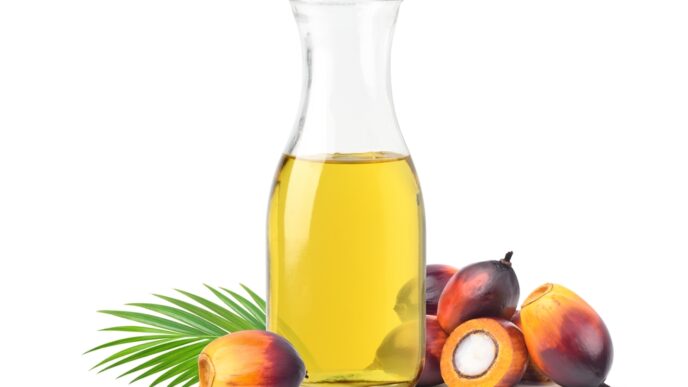Malaysians are consuming more sugar than ever, especially in the form of sweet drinks. The 2019 Malaysian Adults Nutrition Survey found that over half of adults were drinking more than one sugar-sweetened beverage (SSB) a day. This does not change even after the government slapped a sugar tax of RM 0.40 per litre on ready-to-drink beverage. This is a worrying trend, because regular SSB consumption has been linked to a higher risk of fatty liver.
WORDS TAN HO LI AND DR SHANTI KRISHNASAMY
IMAGES TAN HO LI
 FEATURED EXPERT FEATURED EXPERTTAN HO LI Student of Master’s in Clinical Nutrition Faculty of Health Sciences Universiti Kebangsaan Malaysia (UKM) |
 FEATURED EXPERT FEATURED EXPERTDR SHANTHI KRISHNASAMY Senior Lecturer and Dietitian Centre for Diagnostic, Therapeutic & Investigative Studies (CODTIS) Faculty of Health Sciences Universiti Kebangsaan Malaysia (UKM) |
FACTS ABOUT FATTY LIVER
- Metabolic dysfunction-associated fatty liver disease (MAFLD), often known as just “fatty liver”, occurs when there is fat accumulation in the liver.
- It is often accompanied with overweight or obesity, diabetes, and metabolic dysregulation.
A Name Change?What used to be called non-alcoholic fatty liver disease (NAFLD) is now MAFLD.
|
- If left untreated, MAFLD will then advances to steatohepatitis, where fat accumulation and inflammation happen concurrently in the liver.
- Persistent inflammation will then lead to scar tissue formation in the liver and eventually cirrhosis, causing liver stiffness and impairment of its function.
Common Possible Symptoms of MAFLD
|
NOW, WHAT COUNTS AS SUGAR-SWEETENED BEVERAGES (SSBs)?
Sugar-sweetened beverages (SSBs) are drinks that have added sugars such as:
- Table sugar
- High-fructose corn syrup
- Honey
- Syrup
Common examples of SSBs are:
- Carbonated drinks
- Energy drinks
- Coffee and tea with added sugars
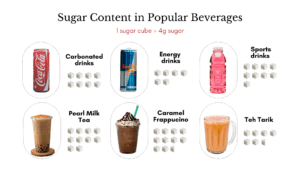
HOW SSBs ARE LINKED TO MAFLD
Studies have shown that the likelihood to develop fatty liver is doubled among frequent SSBs consumers compared with those who only occasionally consume sugary beverages.
Increases Fat Accumulation in the Liver
- This is possibly due to the unique metabolic pathway of fructose, a common sugar found in sugary beverages, that is processed almost exclusively in the liver.
- Excess fructose is converted into fat, thus increasing fat accumulation in the liver.
Decreases Insulin Sensitivity
- Excessive intake of sugary drinks can cause human body to be less sensitive to insulin, the hormone that controls blood sugar.
- Insulin resistance is linked to development of diabetes, one of the risks factors of fatty liver.
Increases Inflammation in the Liver
High consumption of SSBs can increase oxidative stress and cause inflammation in liver cells, further worsening liver damage.
Alters the Gut Bacteria Population (Gut Microbiota)
- SSBs can also alter gut microbiota, leading to impairment of the protective gut barrier.
- This allows harmful substances such as endotoxins to reach the liver, triggering inflammation.
ARE BEVERAGES WITH ARTIFICIAL SWEETENERS BE A GOOD ALTERNATIVE TO SSBs?
Diet or “zero” sodas are sweetened with low- or zero-calorie artificial sweeteners like aspartame, saccharin, sucralose, stevia, and others.
While they’re often marketed as a healthier alternative to sugary drinks, recent research suggests that regularly drinking artificially sweetened beverages might be linked to a higher risk of fatty liver. That said, more long-term human studies are needed to confirm this.
Even so, the World Health Organization (WHO) recently advised against using artificial sweeteners to manage body weight or prevent chronic diseases. Aspartame, in particular, has been classified as “possibly carcinogenic to humans” — a substance that may cause cancer.
So, even though ASBs are lower in calories than their sugary counterparts, moderation is still key.
CAN ONE JUST EXERCISE THE EXCESS SUGARS AWAY?
Exercise helps to reduce liver fat and improve insulin sensitivity.
However, it does not fully undo the effects of excessive sugar consumption.
Therefore, you can be active but still at risk of developing MAFLD if you drink a large amount of SSBs regularly!
IF ONE IS THIN OR HAS HEALTHY BODY WEIGHT, THERE IS NOTHING TO WORRY ABOUT, RIGHT?
Individuals with normal body mass index can still develop MAFLD. This condition is known as ‘lean MAFLD’.
TIPS TO CUT DOWN ON SSBs
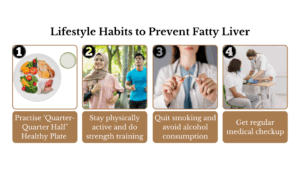
- Slowly cut back your intake of sugary beverages. For example, have them with every other meal instead of every meal, and slowly cut down on the amount further once you are used to drinking less.
- Buy a smaller bottle or can. Do not stock up these beverages at home
- If you are ordering sweet drinks like kopi or teh, ask for kurang manis, but be aware what you get is not always actually less sweet, especially if it is pre-made. Hence, also sip slowly or ask for a glass of plain water on the side to balance things out.
- Check the nutrition label as hidden sugars are everywhere. Look for other options if sugar is one of the first ingredients listed, as that means the sugar content is high. Don’t be fooled by “healthy” claims on the packaging. Drinks like fruit juices labeled “high in vitamin C” can still be loaded with sugar — sometimes even more than soda!
| This article is part of our series on tips and advice for leading a healthy lifestyle. |
References:
- Bakar, S. N. a. a. A., Ali, A., Rahman, A. R. A., Jalil, A. M. M., & Zakaria, N. S. (2024). Unraveling the sugar rush: A cross-sectional study of knowledge, attitudes, and practices related to sugar- sweetened beverages consumption among Malaysian young adults. Malaysian Journal of Medicine and Health Sciences, 20(1), 152–160. https://doi.org/10.47836/mjmhs.20.1.20
- Teng, N. I. M. F., Juliana, N., Izlin, N. L., & Semaon, N. Z. (2020). Knowledge, attitude and practices of sugar-sweetened beverages: A cross-aectional atudy among adolescents in Selangor, Malaysia. Nutrients, 12(12), 3617. https://doi.org/10.3390/nu12123617
- Chen, H., Wang, J., Li, Z., Lam, C. W. K., Xiao, Y., Wu, Q., & Zhang, W. (2019). Consumption of sugar-sweetened beverages has a dose-dependent effect on the risk of non-alcoholic fatty liver disease: An updated systematic review and dose-response meta-analysis. International journal of environmental research and public health, 16(12), 2192. https://doi.org/10.3390/ijerph16122192
- Cheng, S. H., Mohd-Ghazali, S., Kee, C. C., & Tan, L. K. (2025). Daily sugar-sweetened beverage intake and its association with undiagnosed non-communicable diseases among Malaysian adults: Findings from a nationally representative cross-sectional study. Nutrients, 17(10), 1740. https://doi.org/10.3390/nu17101740
- Chua, D., Low, Z. S., Cheam, G. X., Ng, A. S., & Tan, N. S. (2022). Utility of human relevant preclinical animal models in navigating NAFLD to MAFLD paradigm. International journal of molecular sciences, 23(23), 14762. https://doi.org/10.3390/ijms232314762
- Eslam, M., Newsome, P. N., Sarin, S. K., Anstee, Q. M., Targher, G., Romero-Gomez, M., Zelber-Sagi, S., Wai-Sun Wong, V., Dufour, J. F., Schattenberg, J. M., Kawaguchi, T., Arrese, M., Valenti, L., Shiha, G., Tiribelli, C., Yki-Järvinen, H., Fan, J. G., Grønbæk, H., Yilmaz, Y., Cortez-Pinto, H., … George, J. (2020). A new definition for metabolic dysfunction-associated fatty liver disease: An international expert consensus statement. Journal of hepatology, 73(1), 202–209. https://doi.org/10.1016/j.jhep.2020.03.039
- Tseng, T. S., Lin, W. T., Ting, P. S., Huang, C. K., Chen, P. H., Gonzalez, G. V., & Lin, H. Y. (2023). Sugar-sweetened beverages and artificially sweetened beverages consumption and the risk of nonalcoholic fatty liver (NAFLD) and nonalcoholic steatohepatitis (NASH). Nutrients, 15(18), 3997. https://doi.org/10.3390/nu15183997



